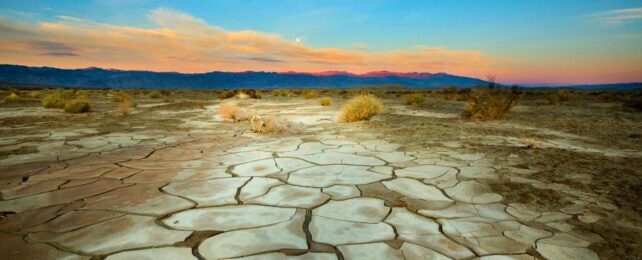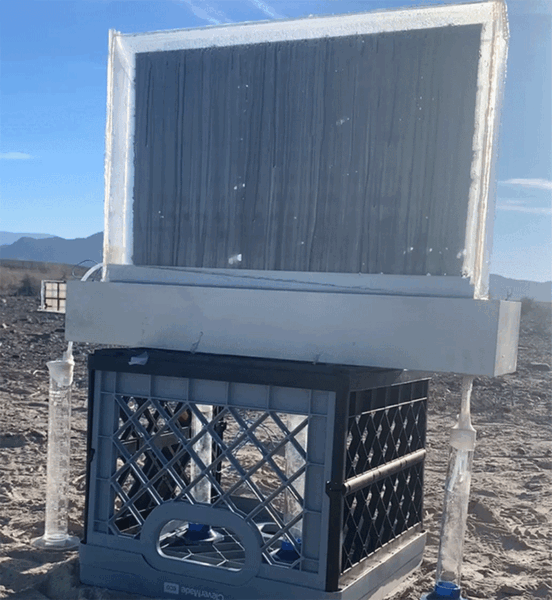A strange black 'bubble wrap' could help solve one of the world's most urgent problems: access to clean drinking water.
As Earth's atmosphere hoards more water in a warming world, engineers have found a new way to wrest some of it back from even the driest air – using an atmospheric water harvester that works without a power source.
Tested in California's Death Valley – one of the driest places on Earth – the harvester managed to extract over more than 50 milliliters of safe-to-drink water per day.
With 4.5 billion people worldwide already without a consistent supply of safe drinking water, if such a device can be scaled and made easily accessible, it will save lives.
Related: Scientists Figured Out How to Extract Gold From Old Phones And Laptops
"Our atmospheric water harvesting window sets a benchmark in daily water production and climate adaptability," MIT mechanical engineer Chang Liu and colleagues write in their paper.
"[It represents] an advance towards practical, scalable, safe and sustainable decentralized water solutions for the most water-stressed regions."

Atmospheric water harvesters have so far been limited by a very low rate of water production (a few milliliters each day) and contamination with high levels of the materials used for the extraction, from salt to lithium.
In Death Valley, four surrounding mountain ranges push clouds up, wringing them of most of their moisture before they reach the parched land beyond. This makes it a challenging test site for water collection.
But a hydrogel made from polyvinyl alcohol (PVA), lithium chloride (a salt that attracts water), glycerol, and black ink was up to the task.

"Through our work with soft materials, one property we know very well is the way hydrogel is very good at absorbing water from air," says MIT mechanical engineer Xuanhe Zhao.
So the team molded this hydrogel into a bubble-wrap shape to increase its surface area for water collection. They ensured its microstructure lacked large enough pores to let the water-attracting salt slip out. Glycerol helped contain the salt inside the gel.
"We have built a meter-scale device that we hope to deploy in resource-limited regions, where even a solar cell is not very accessible," explains Zhao.
The panel of gel, sandwiched between panes of glass with a polymer outer film that assists with cooling, attracted up to 160 ml of water molecules overnight, when humidity was at its highest.
During the day, the water caught by the gel warms up, evaporates from the gel, and condenses on the cooler glass surface. Gravity, working on the vertical panel, along with a system of channels, then collects the water.
"This is just a proof-of-concept design, and there are a lot of things we can optimize," says Liu. "We're working on a next generation of the material to further improve its intrinsic properties."
Of course, even if technologically sound, such a device will only have its intended positive impacts if it can reach the people who need it the most.
"It's a test of feasibility in scaling up this water harvesting technology," says Zhao. "Now people can build it even larger, or make it into parallel panels, to supply drinking water to people and achieve real impact."
This research was published in Nature Water.
